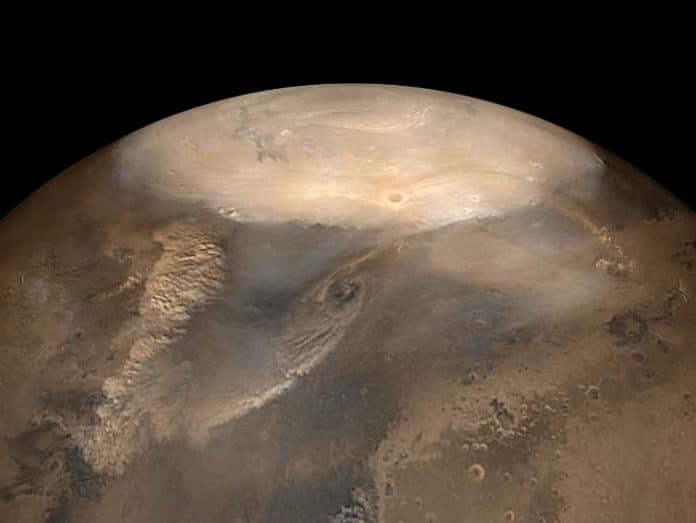It is widely believed that tropical cyclones are an intrinsically moist phenomenon, requiring evaporation and latent heat release in cumulus convection. However, new simulations suggest that such kind of storm can also form in very cold, dry climates.
A climate as cold and dry as the one in the examination is probably not going to ever turn into the standard on earth, particularly as environmental change is making the world warmer and wetter. Be that as it may, the discoveries could have implications for storms on different planets and for the intrinsic properties of the hurricane that scientists and educators at present accept to be valid.
On the planet we live in now, storms need water. When they achieve land, they diet as they keep running of out the water they dissipate for energy – however that doesn’t need to be the situation.
Scientists were keen to know whether hurricanes need water, as theories suggested. However, they have found that they don’t- but in a very different world.
Dan Chavas, an assistant professor of earth, atmospheric and planetary sciences at Purdue University said, “Just because there isn’t something changing phase between liquid and vapor doesn’t mean a hurricane can’t form.”
For the study, using a computer model that imitates a fundamental atmosphere and consistently generates hurricanes. In a general hurricane scenario, this resembles a case with the ocean at the base, yet Chavas changed it to dry out the surface or cool it underneath temperatures that usually create tropical storms.
The coldest simulations were kept running at 240 degrees Kelvin (- 28 F) and delivered a stunning number of cyclones. These cold, dry tempests were commonly smaller and weaker than the hurricanes on earth, yet they framed at a higher recurrence.
As the temperature drops, the air can hold less water, which explains why cold temperatures and dry surfaces yield similar results in experiments. At 240 degrees K, air can hold roughly 100 times less water vapor than at temperatures typical of the modern tropics.
Interestingly, there is a range of moderate temperatures and moisture levels in which no cyclones formed at all. From 250 to 270 degrees Kelvin (-10 F to 26 F), no hurricanes formed, although the researchers aren’t sure why. At 280 Kelvin (44 F), the atmosphere filled again with cyclones.
Chavas said, “Maybe that means there are ideal regimes for hurricanes to exist and the current world we live in is one. “Or you could be in another world where there’s no water, but it’s still capable of producing many hurricanes. When people are considering whether we could live on a dry, rocky planet like Mars, this could be something to consider.”
Such a planet could have even more hurricanes than occur on earth. Because it’s challenging to study the atmospheres of other planets, scientists have to work with their knowledge of earth and fundamental understanding of how atmospheres function.
The findings were published in the Journal of the Atmospheric Sciences.
